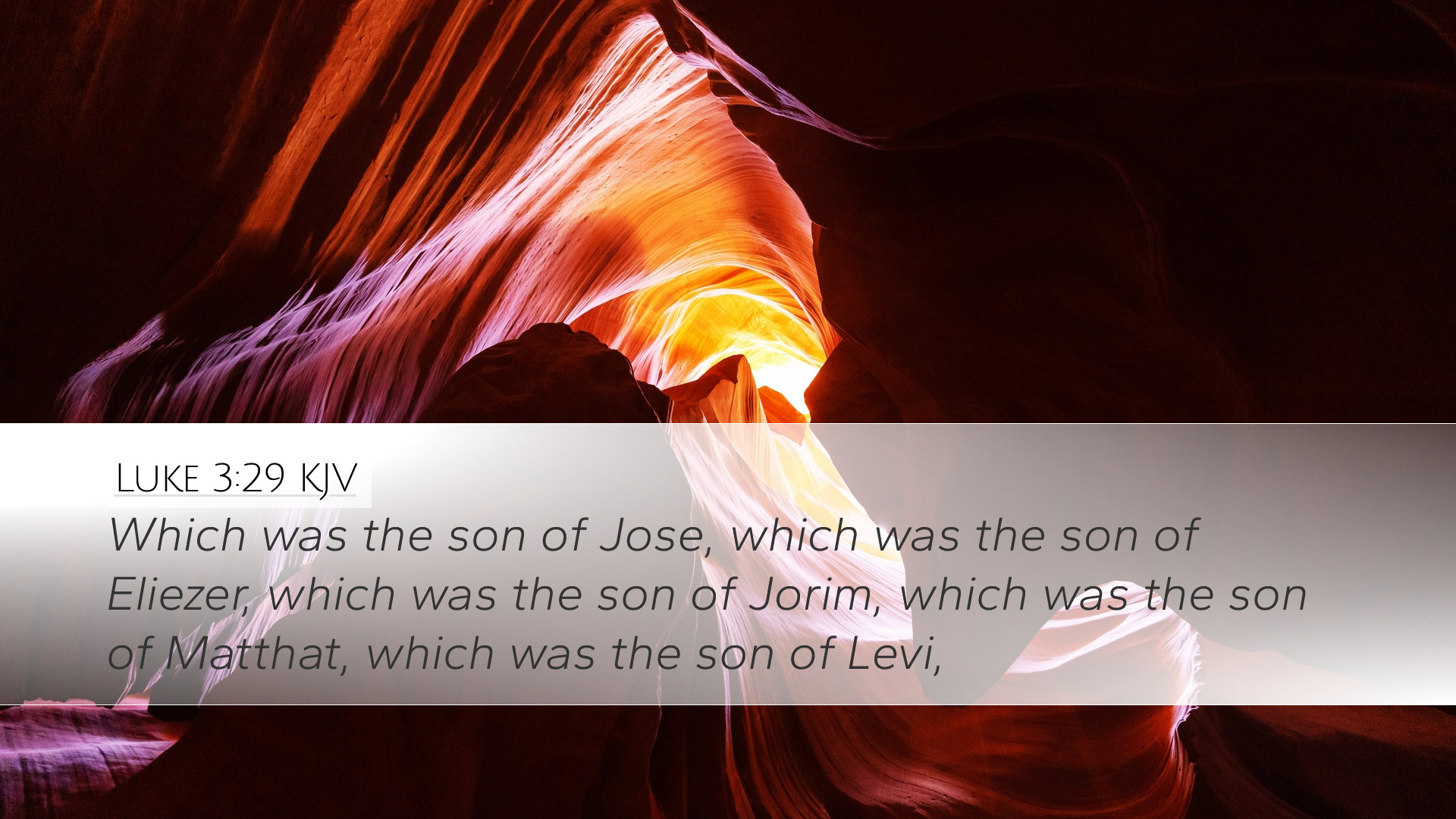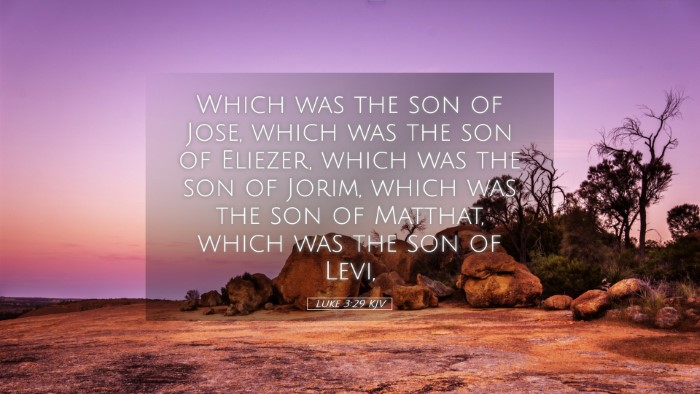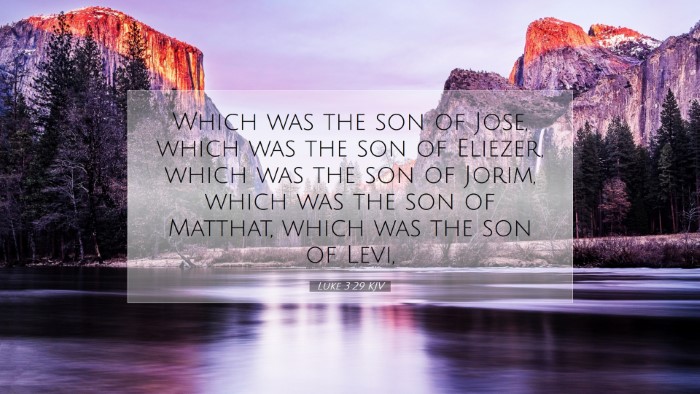Commentary on Luke 3:29
Luke 3:29 states: "And Levi was the son of Melchi, which was the son of Addi, which was the son of Cosam, which was the son of Elmadam, which was the son of Er." This verse is a part of the genealogical record established in the third chapter of Luke, which traces the lineage of Jesus Christ and serves significant theological and historical purposes.
Significance of the Genealogy
In Jewish culture, genealogy was of utmost importance. It not only established one’s heritage but also claimed legitimacy and authority. The genealogy presented in Luke is unique, as it deviates from the account found in Matthew, suggesting different theological emphases and audiences.
Commentary Insights
-
Matthew Henry: Henry emphasizes the sublime purpose of genealogies in the Scriptures. He remarks that Luke’s genealogy points to Jesus as a universal Savior, indicating that He is connected to all of humanity, not just the Jewish lineage, thus fulfilling the promise of God to Abraham to bless all nations (Genesis 12:3).
-
Albert Barnes: Barnes states that Levi was a Levite, signifying the priestly lineage which was of immense importance in the eyes of the Jewish people. This connection implies that Jesus, though not a priest in the Levitical sense, fulfills the role of the ultimate high priest of a new order as highlighted in the book of Hebrews (Hebrews 5:6).
-
Adam Clarke: Clarke offers a detailed examination of each name within the genealogy, affirming their historical validity and the way they create a tapestry of God’s redemptive work through history. He brings forward the nuances of each individual’s life, showing how they contribute to the unfolding narrative leading to Christ.
Theological Implications
The genealogy of Jesus, including the mention of Levi, holds profound theological implications. It reveals the divine sovereignty in human history, showing how God orchestrates events and individuals to fulfill His salvific plan. The inclusion of a Levite signals the transition from the old covenant, centered around the Law and the priesthood, to the new covenant which finds its essence in Christ.
Connection to the Old Covenant
The mention of Levi serves as a reminder of the Levitical priesthood's significance. While Levitical priests mediated between God and the people, Jesus becomes the ultimate mediator (1 Timothy 2:5), affirming the continuity and fulfillment of the Old Testament expectations in the New Testament era.
Application for Today
For pastors, theologians, and students of the Bible, this genealogy inspires a reverence for God’s providential care throughout history. It encourages a deeper understanding of Christ’s identity and mission. Recognizing that Jesus is rooted in a lineage that carries weight and meaning helps illuminate His role in God’s redemptive plan.
The Universal Scope of Salvation
The genealogical record also implies the inclusivity of the gospel's message. The ancestry of Jesus embodies the fullness of God’s promises not limited to one nation but extending to all tribes and tongues. This underscores the Great Commission (Matthew 28:19), compelling believers to carry forth the message of salvation to the ends of the earth.
Conclusion
Luke 3:29, while appearing as a mere listing of names, is profoundly significant within the framework of biblical theology. By integrating insights from Matthew Henry, Albert Barnes, and Adam Clarke, we gain a well-rounded perspective that affirms the historical and theological importance of Jesus’ genealogy. It serves as a reminder that our faith is deeply rooted in God's history with humanity, a narrative culminating in the life and mission of Jesus Christ.


